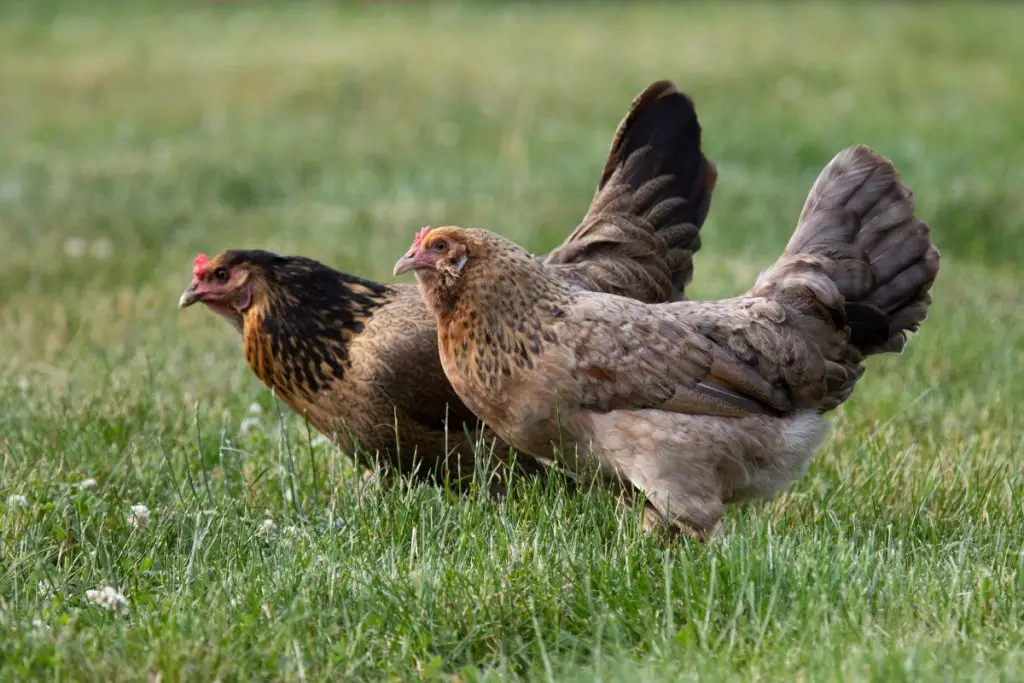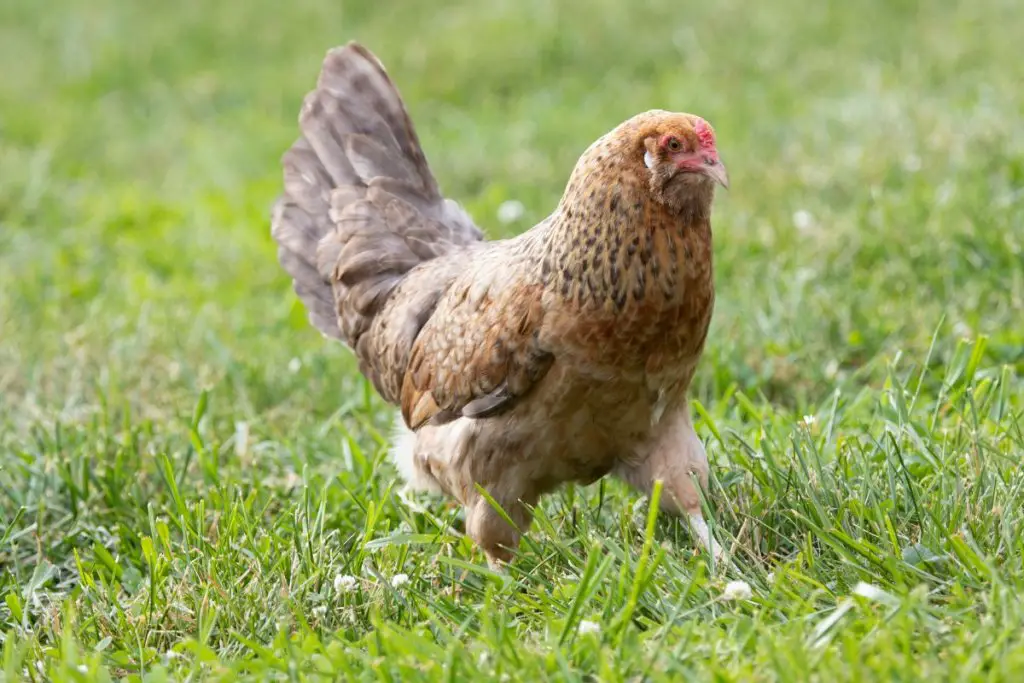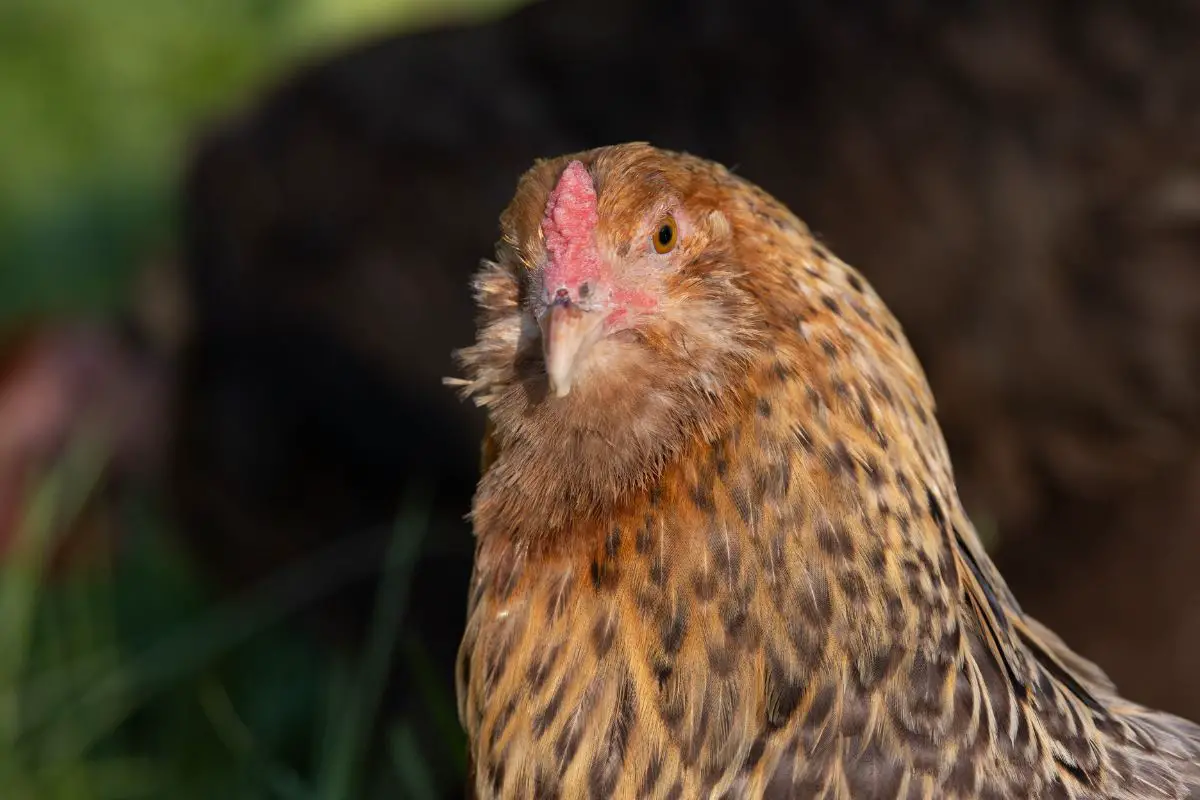Olive Egger Chickens are great egg layers, often laying around 3 to 4 beautiful green eggs per week. They're very healthy and friendly chickens, making them ideal for backyard pets and small farms alike. However, they're not the best for meat production.
People keep chickens for many reasons. While some keep chickens as pets, most people keep them to produce eggs and meat. An interesting phenomenon in the chicken world is raising chickens for the beauty of diverse egg colors.
If you are interested in the latter, you may be looking into Olive Egger chickens for their iconic olive-green eggs. But beyond the fascinating eggs, what are Olive Eggers? And what should you know before you start raising them?
Table of Contents
What is an Olive Egger Chicken?
An Olive Egger chicken is a hybrid or crossbreed between a blue-egg laying female chicken and the male of a dark brown egg-laying breed.
The one unique identifying factor for Olive Eggers is the olive-green color of their eggs, which endears them to many poultry enthusiasts looking to add egg color variety to their egg baskets.
What Does an Olive Egger Chicken Look Like?
There is no standardized way of describing the appearance of an Olive Egger chicken. Since the chickens are crossbreeds between different blue and dark brown egg layers, they have varying features, and standardizing their appearance is challenging.

Most Olive Egger chicks will have black and/or gray plumage when they hatch. Unlike other hybrids that change color as they grow, olive eggers retain their black, gray, or black and gray color. Some are brown.
Olive Egger chickens are generally small-sized. The males reach an adult weight of about 7-8 pounds, while the females attain 6-7 pounds.
The physical features of Olive Eggers differ greatly owing to the wide range of hen-rooster combinations and the resultant varieties. Depending on the parent breeds and the generation of the consequent chicken, Olive Eggers may or may not have the following features:
- Pea combs
- Feathered legs
- Puffy cheeks
- Bears, muffs, crests, or beards
7 Interesting Facts About Olive Egger Chickens
Now that you know what Olive Egger Chickens are and what they look like, let’s look at seven key things you need to know before adding an Olive Egger to your flock.

1. The History of Olive Egger Chickens
The roots of Olive Egger chickens trace back to around 1842 when Chinese chickens arrived in England, and people began cross-breeding them with local breeds.
Olive Egger chickens are usually crossbred with chickens from different places, such as Ameraucanas (USA), Marans (France), Legbars (the UK), and Welsummers (the Netherlands).
2. Olive Eggers and their Iconic Green Eggs
The number one distinguishing feature of Olive Egger chickens is their iconic green eggs. However, the eggs may be blue, brown, or pink, depending on the parent breeds.
The color of Olive Egger eggs depends much on the intensity of the color of the brown-egg layer. Breeding chickens with males with darker brown egg shells often results in eggs with richer colors.
3. Olive Egger Chickens Are Friendly
The temperament of Olive Egger chickens differs significantly. There’s no surefire way to determine their personality, but it’s often better than individual parent breeds.
You can deduce by considering the temperament of the parents. Olive Eggers bred from Marans are more reserved than other chickens. Those with Welsummer blood are pretty intelligent and very broody. Ameraucanas bequeath nervousness to their Olive Egger lifelines.
Generally, Olive Egger chickens are docile, friendly, harmless, and reasonably quiet. These qualities make them beginner-friendly and suitable for homes with children. They are also friendly with other types of chickens.
4. Sexing Olive Egger Hens with Roosters is Fun
To produce an Olive Egger chicken, you’ll have to crossbreed a blue-egg layer hen with a rooster of a dark brown-egg layer breed.
The most common blue-egg layers include Legbars, Ameraucanas, and Araucanas. These can be crossbred with dark brown egg males such as Black Copper Marans, Welsummers, Barnevelders, and the rare Empordanesa and Pendesenca.
The most commonly crossed chicken breeds to produce Olive Eggers include:
- Cream Legbar & Black Copper Marans
- Legbar & Welsummer
- Legbar & Barnevelder
- Maran & Araucana
- Maran & Ameraucana
- Araucana & Barnevelder
- Welsummer & Ameraucana
- Welsummer & Araucana
- Ameraucana & Silver laced Wyandotte
- Ameraucana & Barnevelder
Breeding Olive Eggers can be fun. When you cross a dark brown egg layer rooster with a blue egg layer hen for the first time, you get an F1 Olive Egger, which is short for “first generation Olive Egger”.
Most people breed F1 Olive Eggers with dark brown egg layers to produce F2 Olive Eggers and even onwards up to 9th Generation Olive Eggers. The idea here is to create an Olive Egger that lays a darker egg than its mother.
Using an Easter Egger to hatch an Olive Egger usually works. But it can be frustrating because even if Easter Egger chickens are blue-egg layers, the resultant chicken may inherit some brown egg genes from the Easter Egger.
The best way to go about owning your first Olive Eggers is to buy them from a reliable hatchery or breeder who has mastered the art and science of crossing blue egg-laying hens with the dark brown egg-laying types.
5. Olive Eggers are As Healthy as Horses
Besides the beautiful olive eggs that grace your egg basket with color variety, you’ll also love Olive Egger chickens for their excellent health.
Olive Eggers are highly adaptable to both hot and cold climates. They are known to be cold hardy and undisturbed by too much summer heat.
Olive Egger chickens are as healthy as horses, without the common vulnerability to chicken diseases like coccidiosis and diarrhea. You’ll only have to worry more about lice and bird mites. Olive Eggers with feathered legs are particularly vulnerable to scaly leg mites.
Some mite and lice infestation signs to watch out for include:
- Pale combs
- Drastic drops in laying
- Chickens pecking and scratching themselves
- Scabby feet and legs
- Feather loss
6. Olive Eggers and Coop Requirements
Each Olive Egger requires about 4 square feet of chicken coop space or about 10 square feet per bird if you plan to raise them using the free-range system.
Nesting boxes or egg cartons measuring 12x12x12 with a distribution of at least one for every three birds are ideal to ensure each Olive Egger hen has utmost privacy and safety when laying.
Although they are docile birds, you should expect feather pecking and bullying if you overcrowd Olive Eggers.
7. Good for the Eggs, Not the Best for Meat
Olive Egger chickens are small-sized birds. Their size is similar to that of a bantam, just a bit bulkier.
An Olive Egger rooster weighs 7-8 pounds, but a cockerel weighs much less. The same is also true for female Olive Eggers. If a hen weighs 6-7 pounds, a pullet will weigh much less.
The small size of Olive Egger chickens makes them not the best breed of chicken for meat purposes. You’ll want to keep the chickens mostly because of their excellent egg production.
Most Olive Egger hens start to lay eggs at 5-6 months old or later from 24-30 weeks old. The egg size ranges from medium to large, which is commendable for such small birds.
With an egg-laying rate of 3-4 eggs per week or 150-200 eggs per year, Olive Eggers are good layers that will ensure you have a good supply of colored chicken eggs all year round.
Conclusion
Olive Egger chickens are a great addition to your chicken flock for their iconic olive-colored eggs and friendly nature. They may not be ideal for meat production, but there’s no harm in keeping them for the same.

